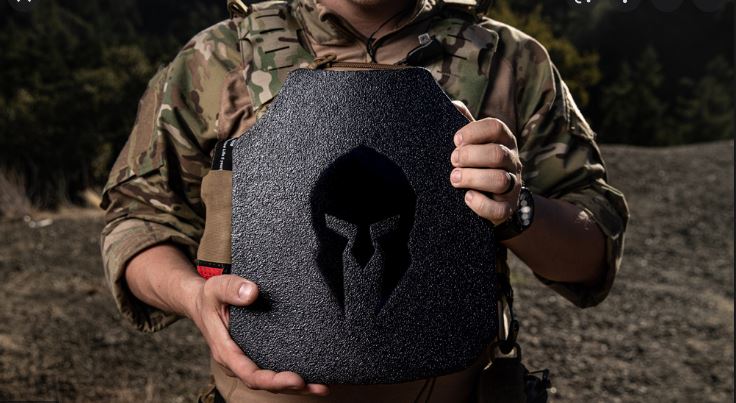A Guide For Choosing Right Ballistic Plate For Your Protection

Military officers, police, and law enforcement wear soft body armor when conducting routine operations and public monitoring. What if you had to engage in real fighting, like in a shooting or riot? Hard Ballistic Plate is useful in these critical situations.
They are crucial inserts in armor carriers’ front and back pockets, which might be the difference between your life and death. Is the use of bulletproof plates necessary, though? Which style of the plate should you have if the answer is yes?
Setting up your armor plate carrier system requires careful evaluation of several factors, which depend on individual preference. When selecting the best plate carrier for your needs, it’s essential to consider sizing, comfort, maneuverability, and threat level of protection.
WHO OWNS PLATE CARRIERS AND WHY?
Traditionally the military or law enforcement use these plate carriers are now very common for civilian body armor. Sports athletics also uses it in sports and training.
Another excellent advantage of a tactical plate carrier is that it allows you to carry your basic gear efficiently and easily in emergencies. Many plate carriers include MOLLE straps that let you attach extras like magazines, first aid kits, holsters, or any other equipment you need to have on hand. It’s a fantastic technique to maintain focus on your target while gathering any essentials, like a mag refill.
Plate carriers are usually for physical activity, and the additional weight creates resistance and effort, strengthening the heart and muscles. If you want to intensify your training, then Enemy’s vest is the best.
BALLISTIC PLATE VS. BODY ARMOR
Body armor is bulletproof gear that protects the user’s critical organs rather than the entire body. Either soft or hard armor is possible. Materials that make up soft armor are flexible, and you can twist them in different directions. Most soft body armor has NIJ (National Institute of Justice) levels II, IIA, and IIIA, which repel pistols.
On the other hand, bulletproof plates or heavy armor are the finest forms of defense against a danger that uses strong bullets. Most of them have a steel sheet in front and crushed polyethylene or ceramic on the back. However, various varieties are now offered on the market, giving customers more alternatives.
ARMOR PLATE MATERIAL
There are different armor plate materials. the soft body armors have lesser levels of protection under NIJ criteria. On the other hand, hard or armor plates have type III and IV NIJ levels, which are more vital to stop rifle bullets.
Materials play a large role in stopping a bullet, and ceramic and HDPE are two of the most popular materials.
CERAMIC PLATES
Ceramic plates contain ceramic tiles that can deflect an approaching bullet. It has several layers of backing materials, including steel and Kevlar, which serve as absorbing agents to shield it against spontaneous breaking. Also, it contains Lumina oxide. If you want a lighter plate, go with silicon carbide. However, please remember that it is significantly more expensive than lumina oxide. The best material is boron carbide, which has a level IV NIJ protection rating and a high density while being lightweight and reliable.
A ceramic armor plate’s vulnerability to damage by a bullet is one of its drawbacks. Although it blocks a shot, the ceramic must break as the bullet strikes it due to its design. Due to its mechanism, it can only withstand a finite amount of shots since each time a bullet strikes the plate, it becomes weak and eventually becomes enough to preserve the wearer’s life.
Ceramic plates’ weight depends on their size, which is another issue, and it weighs 10 by 12 inches, around 7.5 pounds. As a result, the combined weight of the two plates (front and back) will be 15 pounds.
In other words, if you have two additional ceramic plates, you can add 15 pounds to the weight you already carry for your Bulletproof Vest.
POLYETHYLENE PLATES
In addition to ceramic, HDPE plates are a choice among law enforcement and military personnel. Besides being lightweight, it can withstand more bullets than a ceramic plate.
Ballistic plate made of polyethylene are around 50% lighter than those made of other materials because they don’t require backing. High-pressure treatment is typically applied to this material, increasing its durability and reducing its weight.
Polyethylene plates also withstand the impact of bullets without breaking. Because it is more malleable than ceramic, it is a better choice for conflicts and high-risk situations like school shootings.
The cost of an HDPE plate is one thing a user needs to keep in mind, and it costs more than a plate made of ceramic. However, you don’t need to worry as much due to its durability and weight.
VARIOUS TYPES OF PLATE CUTS
The weight of the plate and the coverage it provides to the user depends on its size and cut. The market offers a wide selection of armor plates in various cuts and sizes, and the four most typical cuts are listed below.
WHOLE CUT
Square or rectangular shapes make up a full-cut armor plate. Therefore, its name shields the entire back. This cut’s drawback is that it occasionally restricts the user’s motions.
KNIFEMAN’S CUT
A shooter’s cut armor plate is rectangular in design with clearly cut-off corners above, allowing the wearer to move more freely and agility. Because it is the most practical for people who must carry weapons or
SWIMMER’S CUT
A swimmer’s cut is a modified shooter’s cut plate, and the difference is that more area of the plate’s upper portion removes and allows more movement in the shoulders and upper back.
Small Arms Protective Inserts, or SAPI, are what the military prefers. Depending on the size, the inserts weigh between 3 and 5 pounds.
Don’t forget to consider your demands while selecting your plate cut. Consider how much of your torso needs more protection and how much movement will enable you to move quickly.
FITTING IN THE ARMOR
A male soldier was standing on the grass while a female soldier had a firearm.
We understand the distinctions between body armor and armor plate and how to select the appropriate kind of plate for your needs. How exactly should it fit you is the next question.
The purpose of the armor plate is to shield the user’s heart and lungs from harm, and it doesn’t shield the torso or entire body. Get a measuring tape to determine which size will fit you the best. You may choose height by starting the measuring tape above your collarbone and descending to your navel. Stop around two to three inches above the navel. A plate that is too small will not offer the necessary protection it seeks, while one that is too large may burden the user.
BALLISTIC PLATES: ADDITIONAL PROTECTION FROM BLUNT FORCE TRAUMA
A blunt force trauma occurs when your essential you harm your vital organs by a sharp object, such as a gunshot. The best protection against this kind of trauma is body armor and a ballistic plate, but having additional security, like an armor plate, may avoid harm or even death. Remember that making a small extra investment in your safety will always be worthwhile.




